Mad Hedge Biotech and Healthcare Letter
August 29, 2023
Fiat Lux
Featured Trade:
(WEIGHTY RETURNS)
(NVO), (LLY), (SNY), (AMGN), (PFE), (AZN)
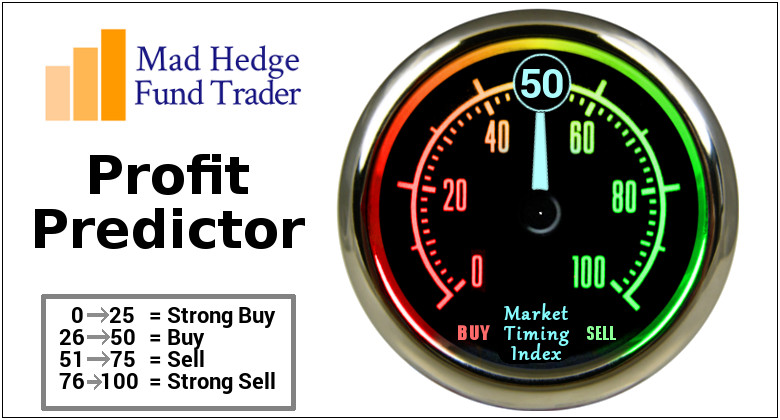
Mad Hedge Biotech and Healthcare Letter
August 29, 2023
Fiat Lux
Featured Trade:
(WEIGHTY RETURNS)
(NVO), (LLY), (SNY), (AMGN), (PFE), (AZN)

These days, the narrative around transformative weight-loss drugs just got a little juicier. Here's the lowdown: Heart-failure patients are now giving a nod to Novo Nordisk’s (NVO) Wegovy. But, why?
The intel shows that the overweight community, grappling with heart woes, noticed a stamina uptick and weight drop when on Wegovy. The buzz was so compelling that it got its spotlight moment at the European Society of Cardiology Congress in Amsterdam. Plus, the New England Journal of Medicine gave it some ink.
Dive into the numbers, and you'll find that out of about 530 individuals with hearts not really pulling their weight (pun intended), the Wegovy brigade shed 13% of their body weight. That’s in stark contrast to the 3% that the placebo group managed.
More walking, less heart huffing-puffing - Wegovy users clocked in 17 times more steps on the treadmill and showcased fewer heart hiccups. Oh, and fewer side effects? Check.
Rewinding the tape, GLP-1 drugs initially stepped into the arena as the remedy for Type-2 diabetes. But then, surprise! Novo’s Ozempic and Eli Lilly’s (LLY) Mounjaro became the talk of the town. Not just because they were treating diabetes, but because those popping them shed an eye-catching 15% to 20% of their body weight. That's blockbuster material right there.
Eventually, Novo bagged the FDA's green light first for weight loss with Wegovy, and its demand skyrocketed so much so that medical maestros started prescribing Ozempic and Mounjaro to folks with weight woes. Now, all eyes are on the FDA's next move concerning Lilly’s weight-loss contender.
Now, here’s the kicker. This isn’t Wegovy’s first rodeo in the spotlight. Earlier this month, eyebrows were raised when it was revealed that these new kids on the block, known as GLP-1 agonists, might be the next superhero squad against a gamut of diseases.
Yet, GLP-1 might not just stop at obesity and heart diseases. It can also combat a spectrum of illnesses, including Alzheimer's. As expected, Novo and Lilly are doubling down on this potential, exploring these drugs' impact on liver and kidney diseases. As the benefits of GLP-1s unfold, insurers will probably be queuing up to offer coverage.
Let’s paint a clearer picture in terms of market potential.
Nearly 42% of U.S. adults grapple with obesity. The World Obesity Atlas dropped a bombshell—by 2035, over 4 billion global citizens might be tipping the scales, adding an astronomical $4 trillion in health costs.
The repercussions? Beyond the obvious heart diseases, strokes, and type 2 diabetes, they are also prone to mental health challenges, like depression and anxiety.
The economic ripples? Staggering. A drug that can be the silver bullet for such a widespread health epidemic could be the next Wall Street darling.
The next 10 years will likely see the GLP-1 agonists market touching an annual $86 billion. Yet, these figures might be leaning heavily on diabetes and off-label prescriptions.
With the World Health Organization cautioning about a billion obese and 2 billion overweight individuals by 2030, it's clear—this market is about to get a whole lot bigger.
With promises like these, it's no shocker that investors are tossing their coins into the ring. Both Novo and Lilly have seen their valuations triple, and Lilly's net worth now towers over its peers at a staggering $500 billion, crowning it the globe's pharmaceutical kingpin.
However, it’s wise to remember that it's one thing to climb the mountain and another to stay on the summit. Even in this early stage, competitors have started to emerge, including Amgen (AMGN), Sanofi (SNY), AstraZeneca (AZN), and Pfizer (PFE).
By 2025, the biopharma giants could potentially unveil their very own GLP-1-based wonder drugs for obesity, chipping away a quarter of Novo and Lilly's market dominance by 2032.
In the ever-evolving theater of biopharma, GLP-1 agonists, led by stalwarts like Wegovy, are emerging as the new front-runners. While the rewards seem tantalizingly vast, savvy investors know the pharmaceutical landscape is punctuated with highs and inevitable lows.
And here's a golden nugget: in the dynamic world of stock trading, every dip is an opportunity disguised as a setback. So, if you're seeking a stock market mantra for this burgeoning sector, remember to buy on the ebb, not the crest. It's in these valleys that fortunes are made, setting the stage for robust returns. Dive in wisely.
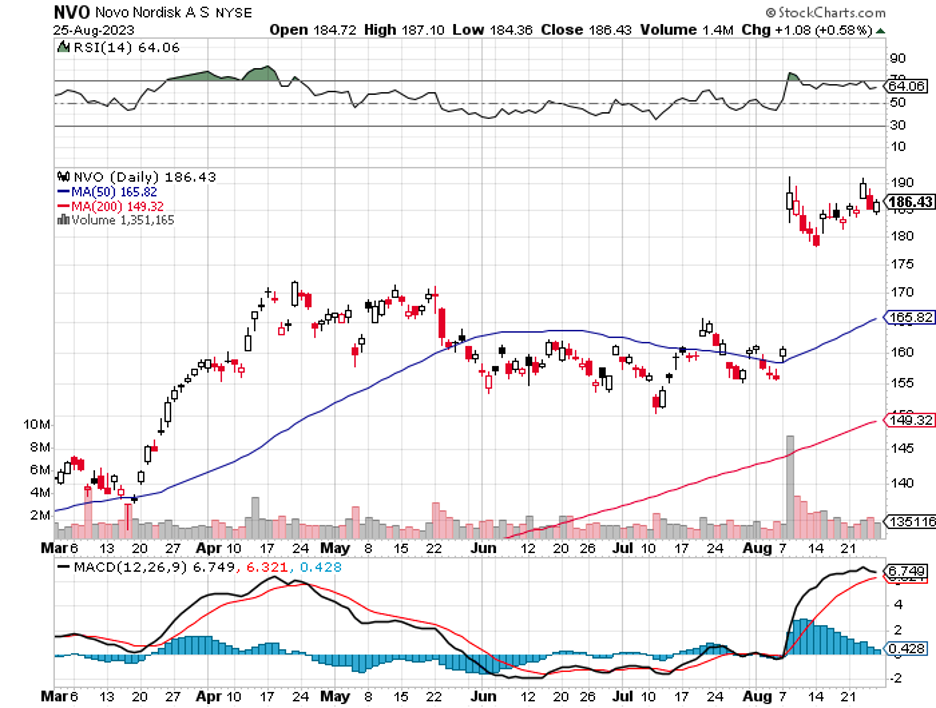
Mad Hedge Biotech and Healthcare Letter
June 1, 2023
Fiat Lux
Featured Trade:
(A PRESCRIPTION FOR LONG-TERM GROWTH)
(JNJ), (LLY), (NVO), (AZN), (KVUE)
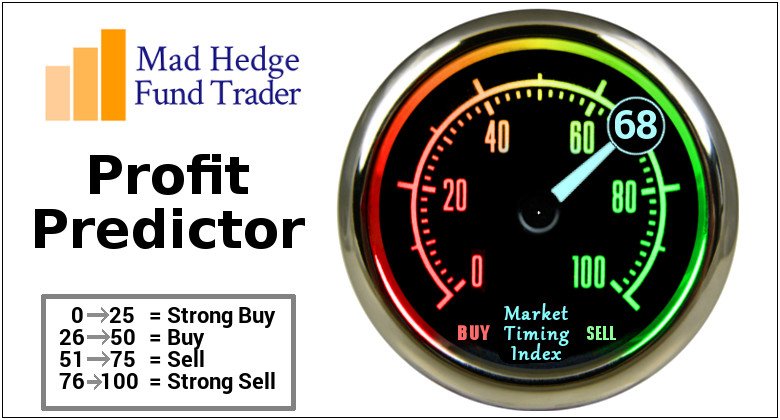
If you share Warren Buffett's investment philosophy of favoring enduring companies that deliver long-term performance and passive income to investors, then you'll find yourself drawn to a compelling opportunity that aligns with his principles.
Now, an opportunity presents itself for fans of Buffett's approach.
Johnson & Johnson (JNJ), a favorite of Buffett's, has recently experienced a decline of approximately 13.38% in its share price since the start of 2023, performing noticeably worse than its primary competitors in the healthcare sector, including Eli Lilly (LLY), Novo Nordisk (NVO), and AstraZeneca (AZN).
However, despite this short-term setback, the long-term outlook for Johnson & Johnson remains exceedingly promising.
Actually, J&J has reached a significant turning point as it undertakes a transformative step. The renowned pharmaceutical giant is embarking on a spin-off of its consumer health business into a distinct entity known as Kenvue (KVUE).
While consumer health products like Tylenol painkillers and Band-Aid bandages have become familiar household names, they represent a relatively small portion of J&J's revenue compared to its pharmaceuticals and medtech divisions.
By separating the consumer health business, J&J can strategically focus on bolstering its revenue growth. This move allows the company to prioritize its pharmaceuticals and medtech segments, which have shown robust performance and hold greater potential for expansion.
Consumer health, while essential in everyday life, has experienced slower growth compared to the other two sectors.
In the pharmaceutical arena, J&J boasts an impressive pipeline with over 100 candidates in development.
With the combined strength of its existing blockbusters and promising new products, J&J anticipates a substantial surge in pharmaceutical revenue.
The company aims to elevate its pharmaceutical revenue from the current $52 billion to approximately $60 billion in the coming years, demonstrating a proactive approach to driving growth.
Simultaneously, J&J is actively pursuing opportunities to enhance its medtech division. It recently completed the acquisition of Abiomed, a specialist in heart pumps.
This strategic move now positions J&J with 12 robust medtech platforms, each generating annual sales exceeding $1 billion. Such acquisitions signify J&J's commitment to expanding its medtech portfolio and staying at the forefront of innovation in this vital sector.
Evidently, J&J's decision to spin off its consumer health business into Kenvue reflects a well-informed strategy to optimize revenue growth. With a renewed focus on pharmaceuticals and medtech, supported by a robust pipeline, blockbuster products, and strategic acquisitions, J&J is poised to propel its business to new heights in the evolving healthcare landscape.
Moreover, investors will undoubtedly appreciate Johnson & Johnson (J&J) for its remarkable status as a Dividend King, marking an uninterrupted streak of more than 50 years of dividend increases.
With the stock experiencing an 11% decline this year, a prime opportunity arises to seize passive income and capitalize on the promising growth potential that lies ahead.
Overall, J&J exhibits unwavering financial stability, consistently generating revenue, profits, and free cash flow. This financial resilience is a crucial determinant for sustainable dividend increases over the long term.
Furthermore, the company's impressive AAA rating stands as a testament to its robust balance sheet, reinforcing its ability to weather potential economic downturns, even if the forecasted recession materializes before year-end.
While J&J has faced legal battles in recent years concerning opioids and talc-based baby powder, these challenges will ultimately run their course. The company has proven its resilience time and again, triumphing over adversities throughout its extensive history.
As a Dividend King, the pharmaceutical giant is currently celebrating its 60th consecutive year of dividend increases—a rare accomplishment in the corporate landscape. Presently, the company's dividend yield of 3.03% surpasses that of the S&P 500 at 1.66%.
Although the cash payout ratio of 73% may seem substantial, J&J possesses the necessary tools to sustain its long-standing approach of gradual and steady dividend growth. Investors can find solace in the security of J&J’s payouts, allowing for a good night's sleep as they navigate the markets.
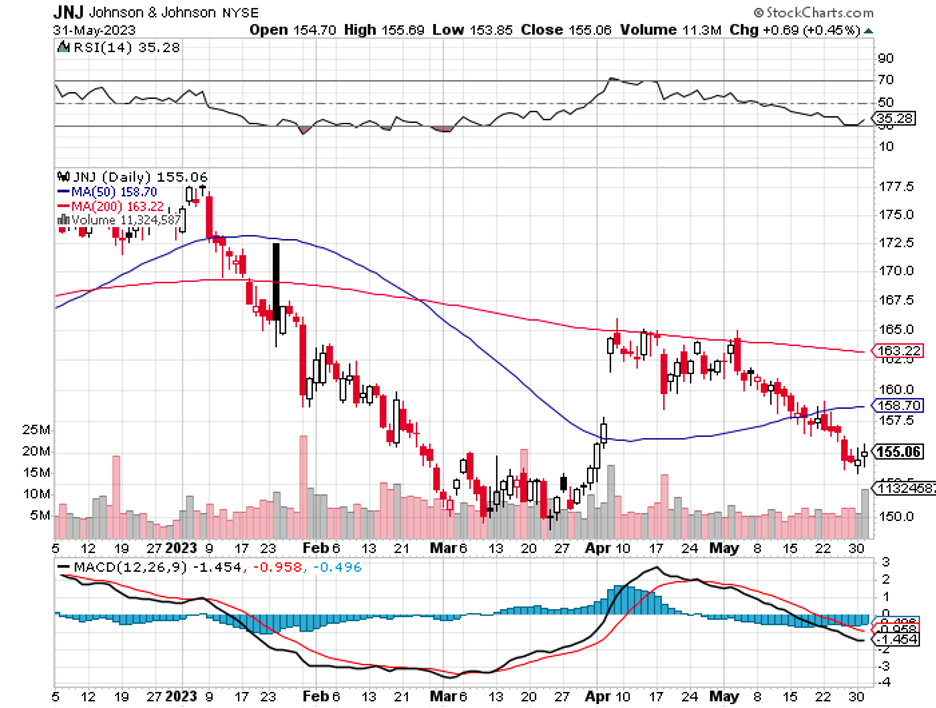
Mad Hedge Biotech and Healthcare Letter
February 9, 2023
Fiat Lux
Featured Trade:
(AN EMERGING KING OF BIOSIMILARS)
(AMGN), (ABBV), (JNJ), (BAYG), (AZN), (REGN)
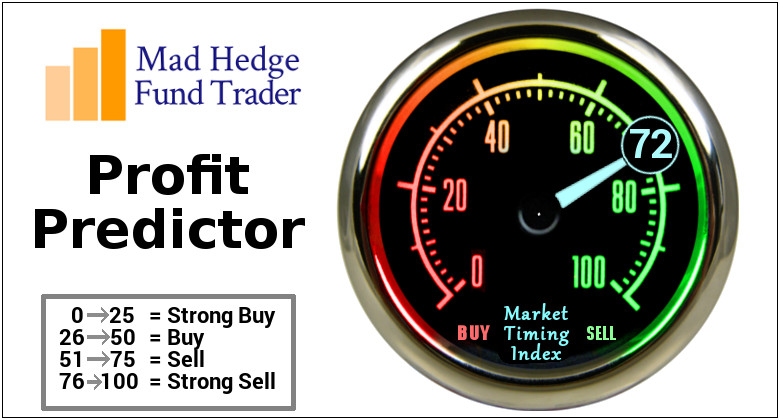
Patience is one of the key attributes that long-term investors need to cultivate, but practicing it is challenging. Stock markets are entirely unpredictable, and their ups and downs tend to rattle even the most experienced investors.
However, it’s essential to keep a calm mind and to be confident that the businesses you invest in have the fortitude to overcome even the most challenging economic or market downturn.
The biotechnology industry is an excellent place to search for stocks that can overcome market turmoils and succeed in the long run because the treatments they develop are so crucial to the lives of their clients.
Amgen (AMGN) is a biotech that would make an excellent long-term investment.
This business, which has been a leader in the biotech sector since the 1980s, is among the largest in the world.
Amgen is also a member of the renowned Dow 30 companies, with a focus on oncology, biosimilars, and inflammatory diseases. In the past 10 years, it has established a strong track record and solid revenue growth trajectory.
The company recently released its fourth-quarter results, and they looked a tad flat on the surface. The report disclosed a total revenue growth of only 2%, which could have been caused by the pressures linked to pricing and competition around the company’s top-selling cholesterol-lowering treatment Repatha, migraine drug Aimovig, and immunology medications Otezla and Enbrel.
Still, Amgen continues to be a solid profit-making business, holding an A+ grade in terms of profitability. It sustains considerable pricing power on its treatments under exclusive patents and from its up-and-coming portfolio of biosimilar candidates.
Amgen has maintained a BBB+ rated balance sheet. It also pays a respectable dividend yield of 3.5%, with a well-protected payout ratio of 44%.
The company has also recorded consecutive growth in this aspect for 11 years. Looking at these figures, Amgen has scored primarily As in terms of consistency, growth, dividend, and yield.
Notably, the company’s foray into the biosimilar landscape would make long-term investors of the company quite happy soon.
Its long-awaited biosimilar version of the No. 1 selling drug worldwide, AbbVie’s (ABBV) Humira, has recently been launched to market.
Amgen’s version, called Amgevita, is the leading biosimilar in this market to date. It already has a five-month lead over the next competitor, arming it with a lot of time to establish a more competitive standing.
Beyond this candidate, Amgen has at least six more biosimilars that it plans to launch in the US and across the globe from 2023 until the end of 2030. This timeline would give the company excellent visibility in the long run.
Another potential biosimilar blockbuster is ABP 654, which is a biosimilar of Johnson & Johnson’s (JNJ) top-selling immunology treatment Stelara.
Amgen also has biosimilar versions of Bayer's (BAYG) and Regeneron’s (REGN) eye disorder drug Eylea and AstraZeneca’s (AZN) rare kidney disease treatment Soliris.
Basically, biosimilars are knock-offs for biologic drugs. They cost less because the manufacturers do not spend less in the research, trials, and approval stages. The processes are also shorter and less risky.
Biosimilars provide a way for patients and the whole healthcare system to save billions of dollars, signaling a bright future for this segment. They offer more affordable options to patients, which is an excellent response to the rising prices of medicines.
This means biosimilar development is far less speculative than creating a new drug, as manufacturers only need to replicate the already established results and success of the existing “original” drug.
Moreover, biosimilars bring with them a degree of pricing power. Unlike traditional treatments, no two biosimilars are allowed to carry the same biologic profile and should still undergo a stringent FDA assessment prior to gaining approval.
Overall, Amgen is a good option for long-term investors on the lookout for a quality biotech to add to their portfolios. Thanks to its burgeoning portfolio of potentially top-selling biosimilars, it has long-term solid revenue growth catalysts. These factors make Amgen a compelling buy on the drop.

Mad Hedge Biotech and Healthcare Letter
January 31, 2023
Fiat Lux
Featured Trade:
(A SAFE HARBOR IN TUMULTUOUS TIMES)
(JNJ), (AZN), (BGNE)
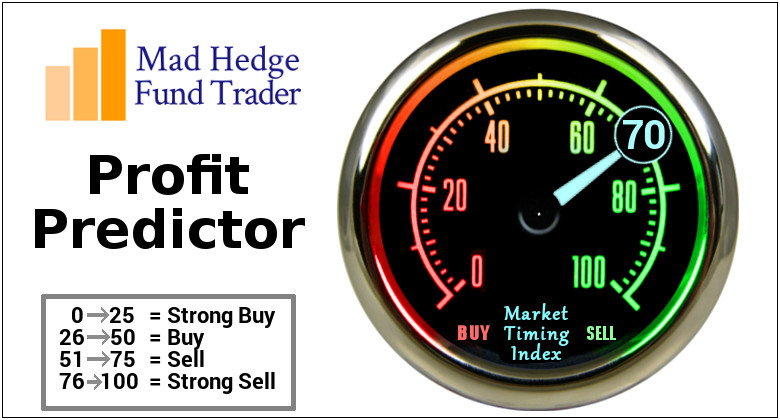
Investors are still determining what to expect in 2023. The stock market could either gradually make a recovery or plummet deeper. In any case, it’s an excellent plan to add some high-quality stocks to your portfolio.
When choosing which company to invest in, it’s good to keep in mind Warren Buffett’s advice: "If you aren't willing to own a stock for 10 years, don't even think about owning it for 10 minutes.”
A safe and reliable stock to bet on is Johnson & Johnson (JNJ).
JNJ recently disclosed its fourth quarter and full-year financial report, wrapping up a resilient showing in 2022 amid the macro headwinds. In fact, the stock is up compared to 2021, outperforming the broader market and underscoring JNJ’s position as an undisputed “blue-chip” leader.
Apart from highlighting JNJ’s position, this healthcare titan’s earnings typically serve as a bellwether for the rest of the companies in the biopharma space. This means that the relative rosiness of JNJ’s report could back up the belief that Big Pharma is one of the defensive havens in this tumultuous market environment.
In its fourth-quarter earnings call, JNJ shared some ambitious sales growth projections for the following years. For instance, pharmaceutical sales that reached $52.6 billion in 2021 are anticipated to hit $60 billion in 2025. While this is exciting for investors, the road to that goal would be challenging.
JNJ has recently been struggling with the declining sales of two major drugs. The first is its blood cancer treatment called Imbruvica, which has been losing its market share to newer drugs like AstraZeneca’s (AZN) Calquence and BeiGene’s (BGNE) Brukinsa.
On top of the falling sales for Imbruvica, JNJ would also need to battle it out with biosimilars of its top-selling anti-inflammatory injection called Stelara by the end of 2023.
Nonetheless, JNJ’s overall sales climbed by 6.2% in 2022, with the business’ pharmaceutical sector expanding a little faster at 6.8%. As for its medtech segment, it grew a bit slower at 6.1%.
Then, JNJ has the consumer health sector. The segment’s operational sales recorded only 3.9% growth, which was well below the company’s two key business units. Clearly, this division is holding back JNJ’s overall development.
In an effort to resolve this situation and enable the company to grow into a more streamlined business, JNJ plans to spin off the consumer health sector into a new and separate company. This will be Kenvue, which is expected to be launched by the second half of the year.
This move will turn JNJ into a nimbler and more rapidly growing business with a renewed focus on medtech and pharmaceuticals. Moreover, the planned spinoff could offer a short-term catalyst for JNJ stock.
On top of all these, JNJ will most likely announce its 61st consecutive annual dividend increase in April. It’s expected that the company will pay shareholders $4.52 per share every year, showing off a dividend yield of 2.67%. In comparison, the industry average is approximately 2.15%.
These issues cast some doubt on JNJ’s ability to hit its $60 billion target. Nevertheless, it reported a positive outlook for 2023. In its full-year guidance, JNJ projected sales to be between $96.9 billion and $97.9 billion. This indicates an annual growth rate of 5%.
Let’s circle back to the idea that JNJ serves as a good bellwether for the rest of the broader market. This Big Pharma leader is a part of the Dow Jones Industrial Average (DIA) and is included in the Top 10 names in the S&P 500. These are critical factors in using JNJ as an indicator for the rest of the companies.
If JNJ can deliver, or even exceed, EPS estimates and report positive earnings this 2023, then the projections are optimistic for other big companies expected to face similar headwinds.
Big Pharma notably outperformed the broader market in 2022, with investors looking into this segment as a safe harbor amid the economic and financial meltdowns. For context, the S&P 500 Pharmaceuticals industry sector increased by 5.6%. Meanwhile, the broader index fell by 19.4%.
Overall, JNJ is a top-quality stock that maintains a positive outlook in the long run amidst the short-term macro headwinds.
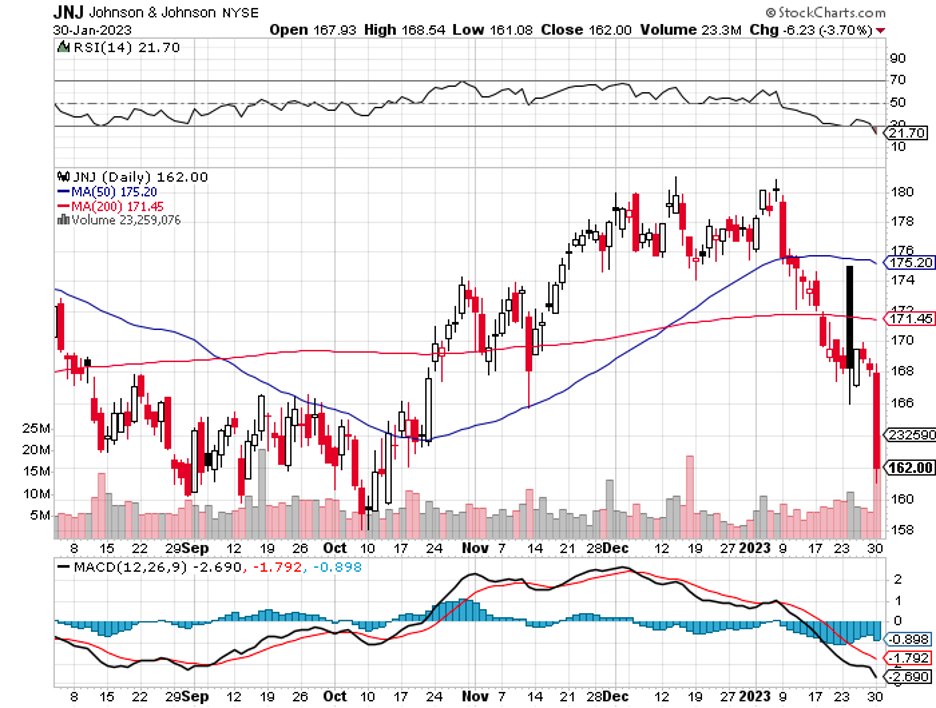
Mad Hedge Biotech and Healthcare Letter
November 22, 2022
Fiat Lux
Featured Trade:
(THE STOCK THAT KEEPS ON GIVING)
(MRK), (JNJ), (PFE), (IMG), (ABBV), (AZN)
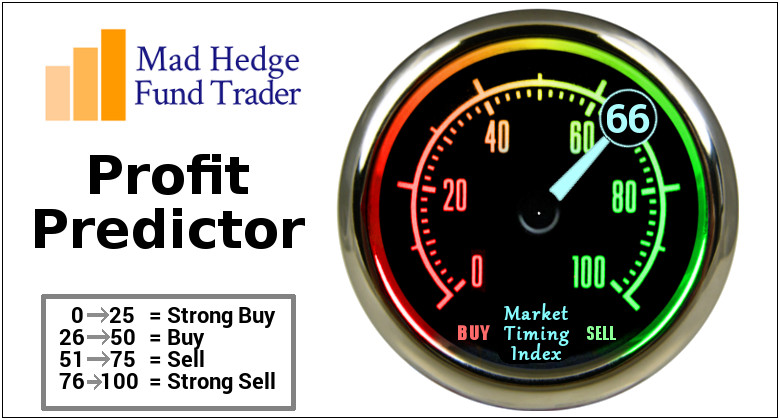
Although the broader market has been experiencing the worst year in a very long time, some businesses still manage to deliver excellent results.
One of them is Merck (MRK).
This biotechnology and healthcare giant has been defying gravity this 2022. While the Health Care Select Sector SPDR (XLV) has slid by quite a substantial margin this year, with the likes of Johnson & Johnson (JNJ) and Pfizer (PFE) succumbing to the pressure, Merck bucked the trend. Its shares have been up by 31% since early January.
Amid the economic and financial crises, Merck remains a promising stock with a number of factors going its way. More importantly, there is a high probability that it can sustain its momentum regardless of what happens to the broader market or the economy.
Merck’s determination to keep this momentum has once again become apparent in its recent announcement.
Earlier this week, the biotech giant disclosed that it would acquire a biopharmaceutical company called Imago BioSciences (IMG) for $1.35 billion.
This would translate to $36 in cash for every share of Imago, which is about twice its recent closing price of $17.40. The deal is anticipated to be completed by March 2023.
Like its large competitors, Merck also has a portfolio of treatments that continue to aid in the growth of its top and bottom lines.
In the third quarter of this year, the biotech’s revenue climbed by 14% year-over-year to reach roughly $15 billion. Meanwhile, its adjusted net income was $4.7 billion, showing a 4% increase compared to the same period in 2021.
Among its products, Merck has been most closely associated with the cancer drug Keytruda. So far, this treatment is on track to rake in $20 billion in net sales this year alone.
In fact, it’s expected to surpass AbbVie’s (ABBV) Humira as the top-selling drug by 2026.
With Keytruda’s patent exclusivity lasting until 2028, Merck has more than sufficient time to prepare for it. Moreover, that means the company can still rely on Keytruda as a strong growth driver for at least five more years.
However, astute investors would point out Merck’s reliance on Keytruda and the risks that come with this arrangement. With the mega-blockbuster’s $5.4 billion net sales, which comprised 36.3% of Merck’s $15 billion total sales in the third quarter, this is a legitimate concern.
It should be noted that Keytruda isn’t the only promising moneymaking treatment in Merck’s portfolio.
One of its promising treatments is its collaboration with AstraZeneca (AZN), which resulted in another cancer medicine called Lynparza. Another is Merck’s HPV vaccines, which continue to rise at a good pace. Finally, the company’s vaccine portfolio has been expanding, with its pneumococcal vaccine recently gaining approval.
Most of its therapies and even its vaccine franchises are on pace to surpass at least $1 billion in net sales this 2022. Needless to say, Merck has been successful in its quest to become more than just a cancer therapy leader.
On top of these, another good reason to take Merck into consideration is its dividend yield.
Merck’s current dividend yield is at 2.8%, which outpaces the 1.6% average yield of the S&P 500. Aside from its top-selling products and robust pipeline that easily support this payout, the company’s dividend is well-covered as well.
Overall, Merck is one of the handful of companies across all industries that has been breaking the norm of poor stock performance in this highly challenging year.
The company can offer a strong shield for wary investors as we deal with the onset of yet another recession. Not only is this biotechnology and healthcare company part of a naturally defensive sector, but its outlook also remains positive amid the issues plaguing the world.
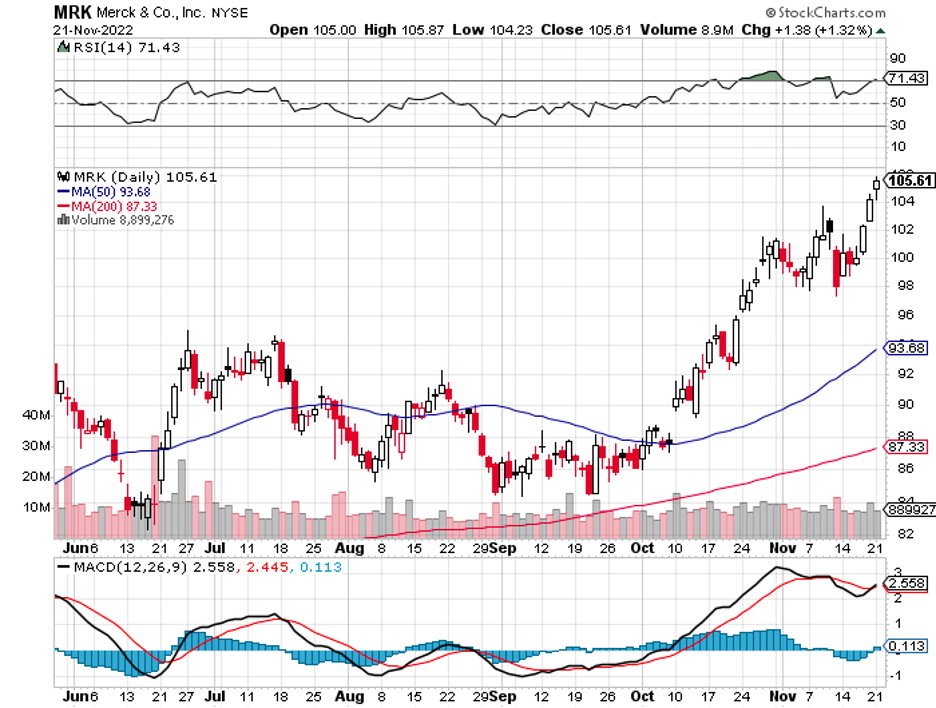
Legal Disclaimer
There is a very high degree of risk involved in trading. Past results are not indicative of future returns. MadHedgeFundTrader.com and all individuals affiliated with this site assume no responsibilities for your trading and investment results. The indicators, strategies, columns, articles and all other features are for educational purposes only and should not be construed as investment advice. Information for futures trading observations are obtained from sources believed to be reliable, but we do not warrant its completeness or accuracy, or warrant any results from the use of the information. Your use of the trading observations is entirely at your own risk and it is your sole responsibility to evaluate the accuracy, completeness and usefulness of the information. You must assess the risk of any trade with your broker and make your own independent decisions regarding any securities mentioned herein. Affiliates of MadHedgeFundTrader.com may have a position or effect transactions in the securities described herein (or options thereon) and/or otherwise employ trading strategies that may be consistent or inconsistent with the provided strategies.
This site uses cookies. By continuing to browse the site, you are agreeing to our use of cookies.
OKLearn moreWe may request cookies to be set on your device. We use cookies to let us know when you visit our websites, how you interact with us, to enrich your user experience, and to customize your relationship with our website.
Click on the different category headings to find out more. You can also change some of your preferences. Note that blocking some types of cookies may impact your experience on our websites and the services we are able to offer.
These cookies are strictly necessary to provide you with services available through our website and to use some of its features.
Because these cookies are strictly necessary to deliver the website, refuseing them will have impact how our site functions. You always can block or delete cookies by changing your browser settings and force blocking all cookies on this website. But this will always prompt you to accept/refuse cookies when revisiting our site.
We fully respect if you want to refuse cookies but to avoid asking you again and again kindly allow us to store a cookie for that. You are free to opt out any time or opt in for other cookies to get a better experience. If you refuse cookies we will remove all set cookies in our domain.
We provide you with a list of stored cookies on your computer in our domain so you can check what we stored. Due to security reasons we are not able to show or modify cookies from other domains. You can check these in your browser security settings.
These cookies collect information that is used either in aggregate form to help us understand how our website is being used or how effective our marketing campaigns are, or to help us customize our website and application for you in order to enhance your experience.
If you do not want that we track your visist to our site you can disable tracking in your browser here:
We also use different external services like Google Webfonts, Google Maps, and external Video providers. Since these providers may collect personal data like your IP address we allow you to block them here. Please be aware that this might heavily reduce the functionality and appearance of our site. Changes will take effect once you reload the page.
Google Webfont Settings:
Google Map Settings:
Vimeo and Youtube video embeds:
